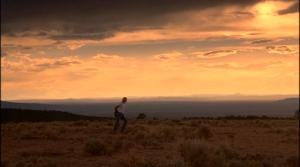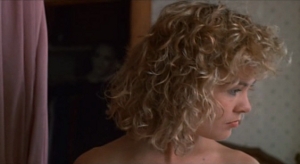By Chad Denton
Synopsis

The crew of the TARDIS prepare to leave the ship to explore their surroundings, but no one notices that a radiation gauge on the console has suddenly jumped from normal to dangerous. Outside there’s a petrified jungle (wasn’t it a swamp last time?), which the Doctor deems devoid of life. However, they do catch sight of a seemingly abandoned but perfectly preserved city in the distance. The Doctor wants to explore it, but Ian with his human sensibilities and British alpha male authoritarianism refuses to let the only person who can pilot the TARDIS (if barely) go off and possibly get himself lost or killed. While Susan is briefly separated from the group on their way back to the TARDIS, someone or something touches her on the shoulder, frightening her, but no one believes her. Back on the TARDIS, the Doctor, who has softened up just a little since the last episode, shows his human guests the basics of life on the TARDIS, by explaining that there are private rooms to rest in (which we don’t see) and by showing a machine that can generate food bars that will have the exact taste of anything the operator asks for. Barbara and Ian’s joy at discovering that there are perks to wandering aimlessly through infinity is short-lived, though, as they hear something banging on the TARDIS’ doors. This, along with Susan’s claims, is enough to cause all three to demand that the Doctor get the TARDIS as far away as possible as soon as possible. Although he still wants to see the city, the Doctor seems to acquiesce. Yet when he tries to get the TARDIS to “launch”, nothing happens, and the Doctor claims that the reason is because some vital part in the console has run out of the mercury it needs to function…but it’s obvious (except to Barbara, Ian, and Susan) that he’s not only lying but proud of himself for doing so. Now, the Doctor explains with feigned regret, they’ll just have to go down to the city and search for any laboratories that might have mercury since there’s no back-up supply on-board.





